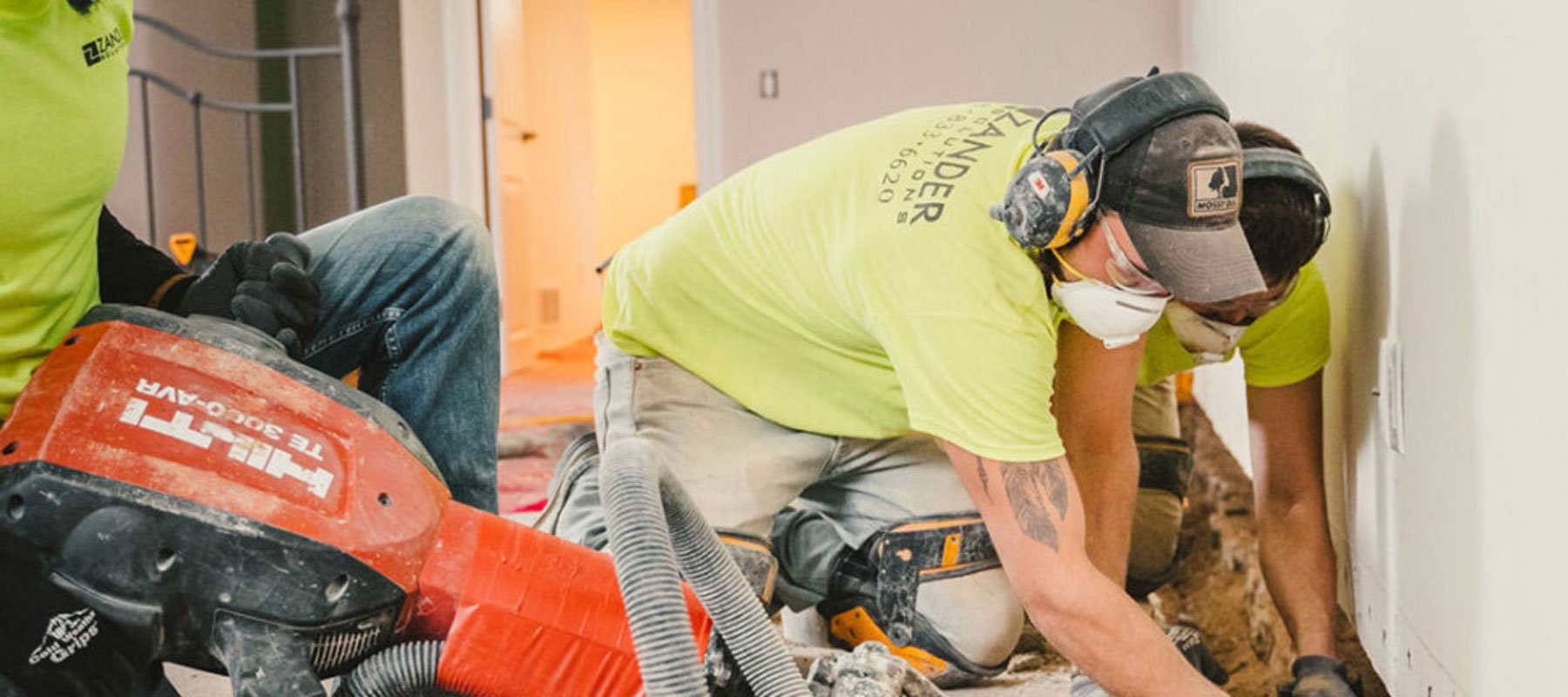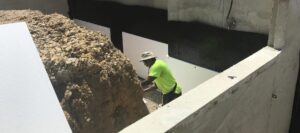
Flooding can be a devastating event for any homeowner, especially when it strikes unexpectedly. Recognizing the early warning signs of potential basement flooding can save you from significant damage and costly repairs. Below, we’ll share key flood warning signs to watch for and provide tips on how to protect your home from water damage.
Common Flood Warning Signs
Recognizing the early signs of potential flooding can help you take proactive measures to protect your home. From subtle changes like musty odors to more obvious indicators such as water stains and cracks, being aware of these warning signs can prevent significant water damage. Here are some common flooding warning signs to look out for:
Water Stains and Discoloration
One of the earliest and most visible signs of potential flooding is water stains or discoloration on your basement walls or floors. These stains often indicate that water has been seeping through the foundation over time. Pay close attention to areas where walls meet the floor, as these are common points of entry for moisture.
Musty Odors and Mold Growth
A persistent musty odor in your basement is a strong indicator of excess moisture, which can lead to mold growth. Mold thrives in damp environments and can pose serious health risks. If you notice a musty smell or see visible mold, it’s crucial to address the underlying moisture issue promptly.
Cracks in Foundation or Walls
Cracks in your foundation or basement walls can serve as entry points for water. While some minor cracking can be expected due to settling, larger cracks or those that are expanding should be taken seriously. These cracks can allow water to seep into your basement, especially during heavy rainstorms.
Sump Pump Issues
A properly functioning sump pump is vital for keeping your basement dry. If your sump pump is running continuously, making unusual noises, or not turning on at all, it could be a sign that it’s struggling to handle water entering your basement. Regular maintenance and inspection of your sump pump can help prevent flooding.
Additional Flooding Warning Signs to Monitor
Beyond the obvious indicators, several subtle signs can signal potential flooding issues in your basement. Monitoring these additional signs can help you catch problems early and take preventive measures. Here are some key warning signs to keep an eye on:
Damp or Wet Floors
Even if you don’t see visible water, damp or wet floors are a clear sign of moisture problems. This could be due to high humidity levels, condensation, or direct water infiltration. Using a dehumidifier can help manage humidity, but identifying the source of the moisture is crucial for long-term prevention.
Efflorescence
Efflorescence is a white, powdery substance that appears on basement walls. It occurs when water seeps through the concrete, dissolving salts and leaving them behind as it evaporates. While not harmful itself, efflorescence indicates that water is infiltrating your basement, which could lead to more serious issues.
Rusty or Stained Metal Fixtures
Check metal fixtures in your basement, such as support beams, pipes, and HVAC systems, for signs of rust or water stains. Rust indicates prolonged exposure to moisture and can compromise the structural integrity of metal components. Addressing the moisture source can help prevent further damage.
Increased Pest Activity
Certain pests, such as termites and carpenter ants, are attracted to damp environments. If you notice an increase in pest activity in your basement, it could be due to excess moisture or water infiltration. Dealing with the water issue will not only protect your home from flooding but also from potential pest damage.
Prevention Tips
To protect your home from flooding, consider implementing the following preventative measures. Regular inspections and maintenance can go a long way in keeping water at bay. Here are some practical steps you can take:
- Inspect and Maintain Gutters and Downspouts: Ensure gutters and downspouts are clear of debris and direct water away from your foundation.
- Install a Sump Pump: If you don’t already have one, consider installing a sump pump to manage excess water.
- Seal Cracks and Gaps: Use waterproof sealant to fill cracks in your foundation and basement walls.
- Improve Drainage: Ensure the ground around your home slopes away from the foundation to prevent water pooling.
- Consider a Drain Tile System: A drain tile system can effectively manage groundwater and prevent it from seeping into your basement. This system redirects water away from your foundation, providing an extra layer of protection against flooding.
Recognizing these flood warning signs and taking proactive steps can help protect your home from significant water damage. If you notice any of these signs, it’s important to consult with a professional to address the underlying issues and ensure your home remains dry and safe.
For a complimentary basement waterproofing assessment, get in touch. Our team is dedicated to keeping your home protected from water damage year-round.




